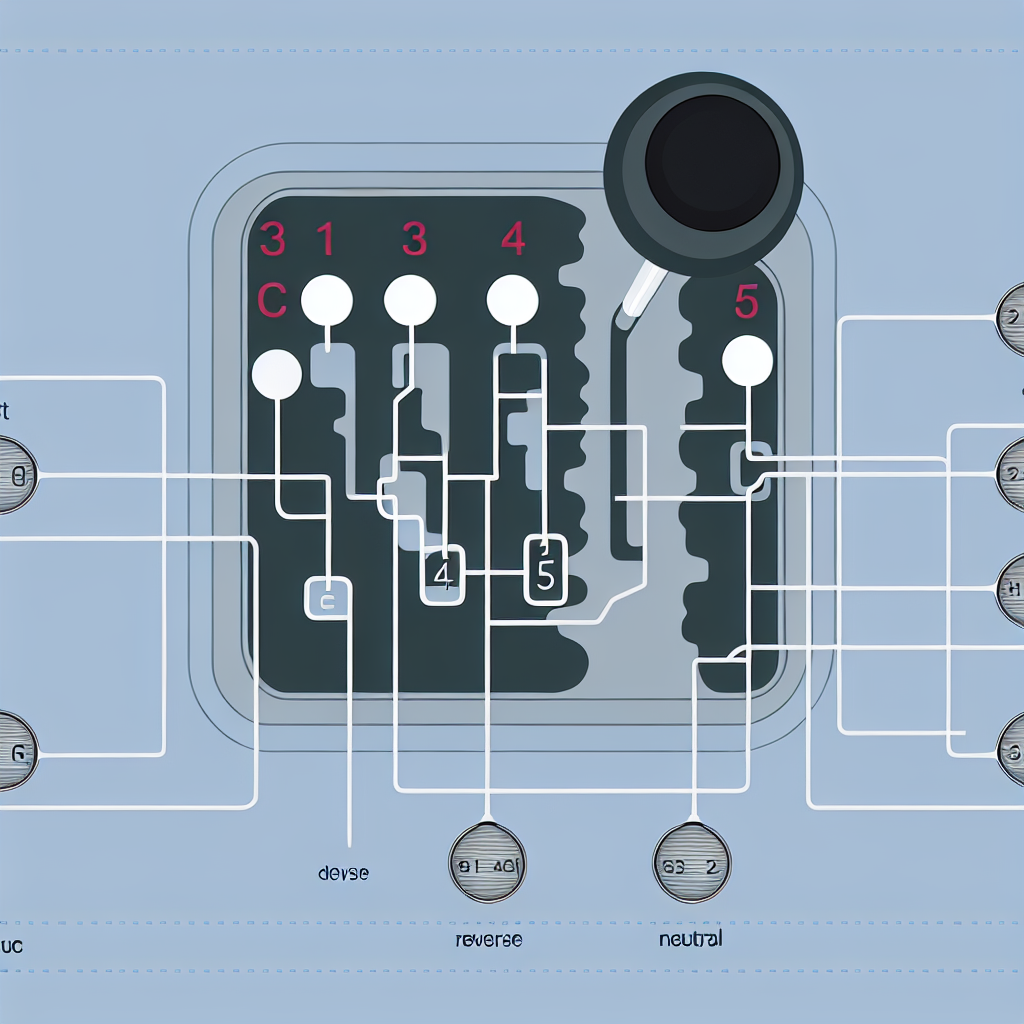In today’s trucking industry, the ongoing relevance of manual transmission skills cannot be overstated. The market evolves constantly. Sign-on bonuses, such as the $2,500 incentive for drivers with manual experience, illustrate how these skills are still highly sought after.
A significant 60% of incoming students at Richards Truck Driving School start their training on manual vehicles. This is surprising given the growing trend toward automated manual transmissions (AMTs), which have a 95% uptake across OEMs in over-the-road applications.
Truck driving professionals who are adept at handling manual transmissions ensure safer practices on the road. They also gain a deeper understanding of vehicle dynamics, which ultimately sets them apart in a competitive job market. Skills that may seem outdated are, in fact, more critical than ever as drivers embrace the challenge that manual transmissions present. By developing these skills, they position themselves advantageously amidst technological advancements in truck driving.
Benefits of Manual Transmission Driving Skills
Knowing how to drive a manual transmission truck provides numerous advantages that set proficient drivers apart in the industry. Below are several key benefits:
-
Enhanced Vehicle Control
Mastery of manual transmission driving allows for superior vehicle control. Drivers can effectively manage torque and speed, especially crucial when navigating steep hills or difficult road conditions. This control not only contributes to safer driving but also enhances the driver’s overall ability to handle heavy loads. As Andy Roberts notes, “If you need to make a tight turn at the next intersection that requires third gear, you need to start downshifting far enough back to be in the correct gear as you approach the intersection.” This precision is essential for maintaining momentum and ensuring safety on the road. -
Deeper Understanding of Vehicle Dynamics
Driving a manual transmission truck fosters a greater comprehension of vehicle dynamics. As Radek Rogowski states, “Understanding shifting helps you understand how the vehicle and its power curves work.” This knowledge is critical for drivers, allowing them to react appropriately under varying load conditions and optimizing performance. -
Increased Job Opportunities
Proficiency in manual transmission driving opens the door to a wider array of job opportunities. Many trucking companies still prefer drivers who can operate manual vehicles, which are often linked to better fuel economy and lower maintenance costs. This skill not only makes drivers more attractive candidates but also enables them to pursue positions that require a Commercial Driver’s License (CDL) without restrictions. -
Cost Efficiency
Manual transmission trucks are usually less expensive to purchase and maintain compared to their automatic counterparts. This can lead to significant cost savings for both drivers and fleet operators, particularly in long-haul scenarios where maintenance expenses can accumulate. -
Skill Development
Finally, learning to drive a manual transmission enhances coordination, focus, and an appreciation for vehicle mechanics. This engagement results in safer driving practices and a more rewarding trucking experience.
In summary, the ability to drive a manual transmission truck not only cultivates essential skills but also provides critical advantages in vehicle control, job marketability, and cost savings. The demand for these skills remains robust, ensuring that drivers prepared to navigate the complexities of manual transmissions will find ample opportunities ahead.

Industry Trends: Manual vs Automatic Transmissions in Trucking
The trucking industry is currently experiencing a significant shift towards automatic and automated manual transmissions (AMTs), driven by various factors including operational efficiency, cost-effectiveness, and the challenges associated with driver recruitment. Here are some key insights:
-
Current Transmission Ratios: As of 2023, manual transmissions held around 45% of the truck transmission market, while automatic transmissions accounted for approximately 40%, with semi-automatic transmissions constituting the remaining 15%. This indicates a stable presence of manual skills in the industry, albeit with a noticeable trend towards automation.
Sources: Verified Market Reports
-
Shift Towards AMTs: Analysts predict that by 2025, the share of manual transmissions will decrease to 43.5%, while AMTs are expected to grow significantly, reflecting a broader acceptance of automated systems within fleets. The enhanced fuel efficiency of AMTs makes them increasingly attractive, offering fleets a 1–3% improvement in fuel economy compared to traditional manuals.
Sources: FreightWaves, TT News
-
Impact on Driver Skills: With the advent of automated technology, the demand for drivers skilled in traditional manual transmissions is declining. This shift is attributed to efforts to attract a broader range of drivers, making truck operation easier and more accessible for individuals without manual transmission experience.
Sources: TT News
In conclusion, while manual transmission skills are still valued in certain niches, the overall trend points towards increased automation in the trucking sector. This shift not only reflects advancements in technology but also responds to contemporary challenges in recruitment and retention within the trucking workforce. Drivers contemplating their place in the industry should stay informed of these trends, as they navigate their training and career paths in this evolving landscape.
| Feature/Aspect | Manual Transmissions | Automatic Transmissions |
|---|---|---|
| Driving Experience | More engaging, requires skill to operate | Easier and more convenient for less experienced drivers |
| Fuel Efficiency | Typically more efficient in the hands of skilled drivers | Generally better due to optimized shifting |
| Maintenance Costs | Lower costs, but more frequent driver involvement | Higher costs, but less frequent maintenance needed |
| Job Opportunities | Preferred by some employers, particularly in niche markets | Increasingly common, more demand for automatic drivers |
| Control and Handling | Greater control over gear selection | Less control, shifts automatically based on speed and load |
| Learning Curve | Steeper learning curve; requires practice | Easier to learn, often preferred by new drivers |
| Driving Conditions | Better suited for challenging driving conditions | Suitable for varied conditions, especially city driving |
| Skill Set Requirement | Requires technical driving skills | Minimal technical skills required |
Conclusion
The mastery of manual transmission skills in the trucking industry remains crucial despite the growing trend toward automated systems. While advances in technology such as automated manual transmissions (AMTs) provide benefits in terms of fuel efficiency and ease of operation, the traditional skills associated with manual transmissions ensure enhanced vehicle control and a deeper understanding of driving dynamics. As highlighted by industry experts, companies are still offering incentives, such as sign-on bonuses, to attract drivers proficient in manual operations.
Moreover, drivers with these skills stand out in a competitive job market, as many employers seek candidates who can handle manual transmissions. Additionally, learning to drive manual trucks fosters essential operational competencies that lead to safer driving practices and greater job satisfaction.
As the trucking landscape evolves, those who prioritize the cultivation of manual transmission skills will likely find ample job opportunities and remain valuable assets in an industry that continues to appreciate diverse driving capabilities. Adapting to changes while holding onto foundational skills is key to thriving in the future workforce of trucking.
Conclusion
The mastery of manual transmission skills in the trucking industry remains crucial despite the growing trend toward automated systems. While advances in technology such as automated manual transmissions (AMTs) provide benefits in terms of fuel efficiency and ease of operation, the traditional skills associated with manual transmissions ensure enhanced vehicle control and a deeper understanding of driving dynamics. As highlighted by industry experts, companies are still offering incentives, such as sign-on bonuses, to attract drivers proficient in manual operations.
Moreover, drivers with these skills stand out in a competitive job market, as many employers seek candidates who can handle manual transmissions. Additionally, learning to drive manual trucks fosters essential operational competencies that lead to safer driving practices and greater job satisfaction.
As the trucking landscape evolves, those who prioritize the cultivation of manual transmission skills will likely find ample job opportunities and remain valuable assets in an industry that continues to appreciate diverse driving capabilities. Adapting to changes while holding onto foundational skills is key to thriving in the future workforce of trucking.
“The only constant in trucking is change.”
This quote encapsulates the essence of adapting in an ever-evolving industry, reinforcing the idea that embracing both new technologies and foundational skills like manual driving remains vital for success.
The Role of Training Schools in Teaching Manual Driving
Richards Truck Driving School and Mountain Transport Institute (MTI) both incorporate manual transmission training into their programs, recognizing its importance for entry-level drivers. The presence of ‘truck driving schools’ providing manual training is vital for developing a skilled workforce.
Richards Truck Driving School:
Richards offers training on both automatic and non-synchronized manual transmissions, such as the Eaton Fuller 10-speed. Their A-Z Tractor Trailer Driver Training Course includes 67 hours of in-vehicle training and 37 hours of in-class instruction, exceeding the Minimum Entry Level Training (M.E.L.T) standard. Students can choose between automatic and manual transmission training at no additional cost. The school emphasizes that understanding manual transmissions helps drivers comprehend vehicle power curves and overall operation. Richards Truck Driving School
Mountain Transport Institute (MTI):
MTI offers a Mountain Driver Training program that requires students to be proficient in up- and downshifting non-synchronized multi-speed transmissions. This week-long course focuses on handling heavily loaded trucks in mountainous terrain, teaching proper procedures for ascending and descending long grades; it includes both classroom instruction and practical driving experience. Mountain Transport Institute
Implications for Entry-Level Drivers:
Training on manual transmissions provides entry-level drivers with a comprehensive understanding of vehicle mechanics, enhancing their ability to handle diverse driving conditions. Proficiency in manual transmissions can also broaden employment opportunities, as some fleets still operate vehicles with manual gearboxes. However, the industry is witnessing a shift towards automated manual transmissions (AMTs). While learning on AMTs can expedite the licensing process, it may limit drivers to vehicles equipped with such systems. Therefore, obtaining manual transmission training can offer greater flexibility and adaptability in a driver’s career. Truck News
Statistics Related to Manual Transmission Training
The trucking industry is experiencing a noticeable shift towards automated and automatic transmissions, influencing training strategies for entry-level drivers. Here are some relevant statistics that shed light on the current landscape of manual transmission training:
- Percentage of Students Training on Manual Transmissions: At Richards Truck Driving School, a significant 60% of incoming students start their training on manual transmissions, indicating a robust interest in traditional driving skills despite the growing presence of automated systems in the industry.
- Sign-On Bonuses: Companies continue to recognize the value of manual transmission expertise, offering competitive incentives to attract skilled drivers. For instance, the industry reports an average sign-on bonus for new drivers at around $3,777, with bonuses ranging from $1,500 to $10,000 common in the truckload sector. Notably, some carriers specifically provide these bonuses for drivers proficient in manual transmissions, emphasizing the ongoing demand for these skills.
- Diminishing Manual Transmission Adoption: As automated manual transmissions (AMTs) gain traction, the overall adoption of manual transmissions in new vehicles has significantly declined. This shift highlights the need for training programs to adapt to the evolving equipment landscapes.
- Market Trends: By 2025, estimates indicate that manual transmission usage will drop to approximately 43.5% in the trucking sector, suggesting a need for training schools to align their curricula with the industry’s transition towards automation while still acknowledging the fundamental value of manual driving knowledge.
- Industry Insight: A recent report by Frost & Sullivan projects that the market share for manual transmissions in North American medium- and heavy-duty trucks will decline significantly over the coming years due to factors such as driver shortages and evolving training needs. For more detailed insights, refer to the full report here: Frost & Sullivan Report on Trucking Transmissions.
In conclusion, while there may be a reduction in the use of manual transmissions in the industry, the training of drivers in manual skills continues to be relevant and beneficial. Awareness of these statistics can aid potential drivers in making informed decisions about their training options and career paths in a changing landscape.
Entry-Level Driving Challenges Without Manual Skills
New drivers entering the trucking industry without manual transmission skills face an array of challenges that can significantly restrict their professional development and job opportunities. The shift toward automatic and automated manual transmissions (AMTs) may seem beneficial, but it also poses disadvantages for those not versed in manual driving techniques.

Key Statistics in Manual Transmission Skills
- $2,500: Average sign-on bonus for drivers with manual transmission experience.
- 60%: The percentage of incoming students at Richards Truck Driving School starting their training on manual vehicles.
- 95%: The uptake of Automated Manual Transmissions (AMTs) across OEMs in over-the-road applications.
These statistics emphasize the ongoing demand for manual driving skills in the trucking industry, highlighting their relevance even in an increasingly automated environment.


